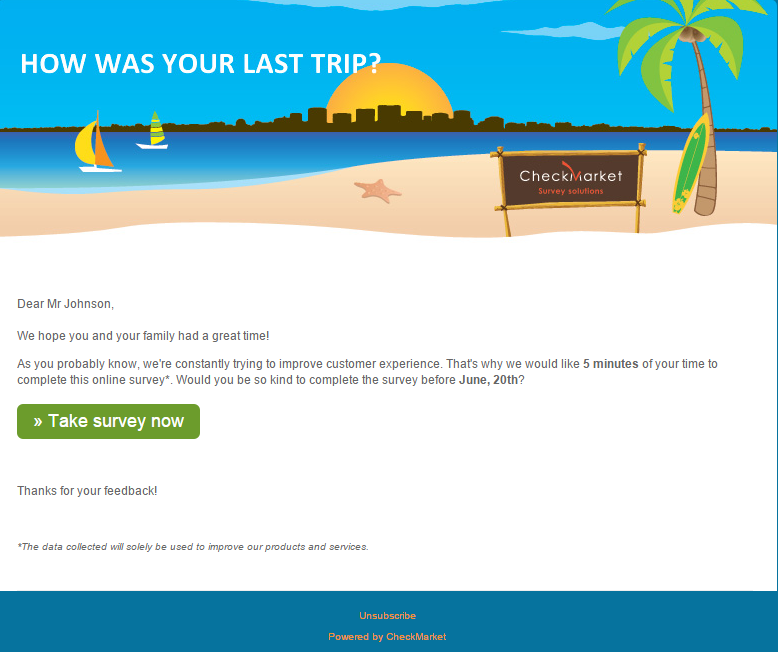One of the biggest benefits of sending out a survey email invitation is scope – you’re just one click away from gaining an insight into your entire customer base! This presupposes, however, that your respondents actually read and click your email. And there’s the rub … The average response rate for surveys sent via email is around 10-15 percent. Boosting that number should be any market researcher’s goal. And here’s how …
1) Deliver an engaging email subject line
If you plan to invite your respondents via email, make sure your subject line catches their attention – without being overly splashy or cheesy! There are no general rules here. However, try to come up with a short, descriptive line providing your reader with a good reason to open the email. Always make sure it’s clear who the sender is (mention your brand name!) and address your reader personally – powerful survey software allows you to send email invitations containing variables to personalize your message. Do you offer an incentive for your respondents? Mention this in your subject line!
2) Make sure your survey email invitation looks great
Looks aren’t everything? Think again! Your survey invitation has to look topnotch. An attractive design conveys credibility and professionalism, urging your respondents to click through to the actual survey – it might be a good idea to try out a couple of designs using A/B testing to determine which is best. Also, always (always!) make sure your email design is fully responsive – the same holds true for the survey itself, by the way. The number of mobile users has increased over the past years and will continue to do so for quite a while.
3) Explain the survey’s purpose in your email invitation
Respondents are more likely to fill in a survey when they know its purpose. Inform your targets how the results will be used – for instance, to provide better service in the future or improve product quality – and guarantee the data won’t be used outside of your company.
4) Provide a deadline for your survey
That’s right, a little pressure never hurt anyone. A deadline will create urgency to “Take the survey now!” Respondents who don’t have time may opt to “Take the survey later”. Whatever you do, mention a specific date to dissuade procrastination.
5) Let your contacts know how long the survey will take
Don’t say your survey is “brief”. Instead, be precise: “This survey only takes up 5 minutes of your time” is much more convincing and allows your respondents to plan their time. Be sure not to make your survey too long – anything that takes over 20 minutes is a no go!
Here’s an example of a good survey email invitation:


Laisser un commentaire